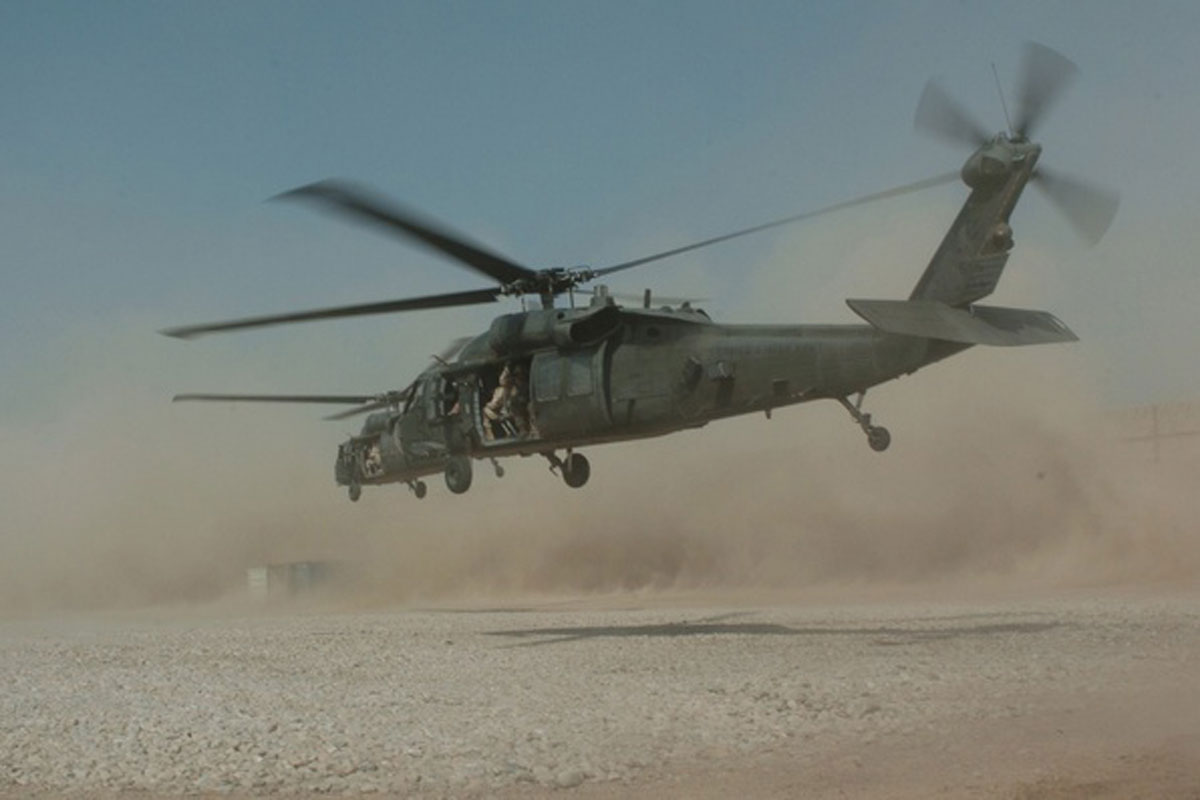Achieving Excellence: Trick Techniques for UH 60 Helicopter Maintenance
Achieving Excellence: Trick Techniques for UH 60 Helicopter Maintenance
Blog Article
Comprehending the Mechanics and Design Behind Uh 60 Helicopters
The UH-60 helicopter, frequently understood as the Black Hawk, stands as a pinnacle of modern rotorcraft modern technology, embodying a blend of durable engineering and elaborate technicians. From its creation to its existing iterations, the evolution of this airplane showcases a blend of advancement and functionality. As we peel back the layers of the UH-60's layout, a world of complex systems and careful engineering comes to light. Recognizing the mechanics and engineering behind this flexible airplane unveils a world where accuracy meets power, and where each part plays a crucial function in accomplishing flight.
History of UH-60 Helicopters
The background of UH-60 helicopters traces back to the late 1970s when the United States Military looked for a functional and advanced energy helicopter to change its aging fleet. In feedback to this demand, the Sikorsky Airplane Firm developed the UH-60 Black Hawk helicopter. Introduced in 1979, the UH-60 swiftly came to be a staple in military operations because of its remarkable capacities.
The UH-60 was designed to excel in a selection of goals, consisting of troop transportation, clinical emptying, digital war, and unique procedures. Its ability to adjust to different roles made it a beneficial asset to the U.S. uh 60. Military and other army forces around the globe
Over the years, the UH-60 platform has actually undergone numerous upgrades and variations to boost its performance and keep rate with advancing mission requirements. These helicopters have seen substantial service in problems such as the Gulf War, Afghanistan, and Iraq, showcasing their integrity and flexibility in varied functional atmospheres. The UH-60's abundant history is a testimony to its long-lasting tradition as a premier energy helicopter.

Engine and Power Systems
Utilizing cutting-edge propulsion technology, UH-60 helicopters are furnished with sophisticated engine and power systems to guarantee optimal efficiency and integrity in a series of functional circumstances. The UH-60, frequently called the Black Hawk, is powered by two General Electric T700-GE-701D engines, each with the ability of delivering up to 1,940 shaft horsepower. These turboshaft engines give the needed thrust for the helicopter to execute its goals properly, consisting of troop transport, clinical emptying, and combat assistance.

Rotor System and Aerodynamics
Exactly how do the rotor system and aerodynamics of UH-60 helicopters add to their functional performance and trip abilities? The blades system of the UH-60 helicopter plays a vital role in giving lift and propulsion. The UH-60 includes a four-bladed, completely expressed rotor system that permits high ability to move and stability during flight. This style allows the helicopter to carry out a variety of missions, from transport and medical discharge to battle procedures.
Aerodynamics also play a crucial role in the efficiency of UH-60 helicopters. The streamlined body and blades blade style decrease drag, permitting the helicopter to attain higher rates and much better gas effectiveness. The aerodynamic layout of the UH-60 additionally adds to its capacity to run in diverse ecological problems, including hot temperatures and high elevations.
Avionics and Flight Control Equipment

In its detailed control with the rotor system and the rules of aerodynamics of UH-60 helicopters, the avionics and flight control systems create an essential network of modern technologies shaping have a peek at this website the aircraft's functional capacities. In the UH-60, these systems consist of digital displays, interaction radios, General practitioner navigating, weather condition radar, and auto-pilot systems.
The flight control systems of the UH-60 are in charge of translating the pilot's inputs into the suitable changes to the blades system, guaranteeing secure trip and maneuverability. These systems include hydraulic actuators, servos, and computers that function with each other to regulate the tail and primary blades, along with other flight control surface areas. By precisely taking care of the helicopter's trip dynamics, these systems make it possible for pilots to carry out a wide variety of goals, from transportation and search-and-rescue to battle operations, with accuracy and self-confidence.
Role and Applications in Air Travel
Avionics systems in UH-60 helicopters include a range of digital systems that aid in navigating, interaction, surveillance, and controlling various aircraft functions. These systems consist of electronic screens, autopilot systems, interaction radios, GPS navigating devices, and weather condition radar. Additionally, these systems integrate safety and security functions such as auto-pilot modes, surface understanding alerting systems, and security augmentation systems to improve the total security and operational abilities of the UH-60 helicopters in different objectives, consisting of troop transport, clinical evacuation, search and rescue, and airborne firefighting.
Conclusion
In conclusion, the UH-60 helicopter is a versatile aircraft with a rich background and progressed design. Its engine and power systems, blades system, the rules of aerodynamics, avionics, and trip control systems all function with each other to make it a effective and trustworthy equipment.
In its detailed control with the blades system and aerodynamics of additional hints UH-60 helicopters, the avionics and flight control systems form an important network of innovations browse around this site forming the airplane's functional abilities.The flight control systems of the UH-60 are responsible for translating the pilot's inputs right into the proper adjustments to the rotor system, ensuring secure trip and maneuverability. Avionics systems in UH-60 helicopters encompass a variety of electronic systems that aid in navigating, communication, monitoring, and controlling numerous aircraft functions. In addition, these systems integrate security features such as auto-pilot modes, surface understanding warning systems, and security enhancement systems to enhance the total security and operational capacities of the UH-60 helicopters in various objectives, consisting of troop transport, clinical discharge, search and rescue, and airborne firefighting.
Its engine and power systems, rotor system, the rules of aerodynamics, avionics, and flight control systems all function with each other to make it a trusted and effective device.
Report this page